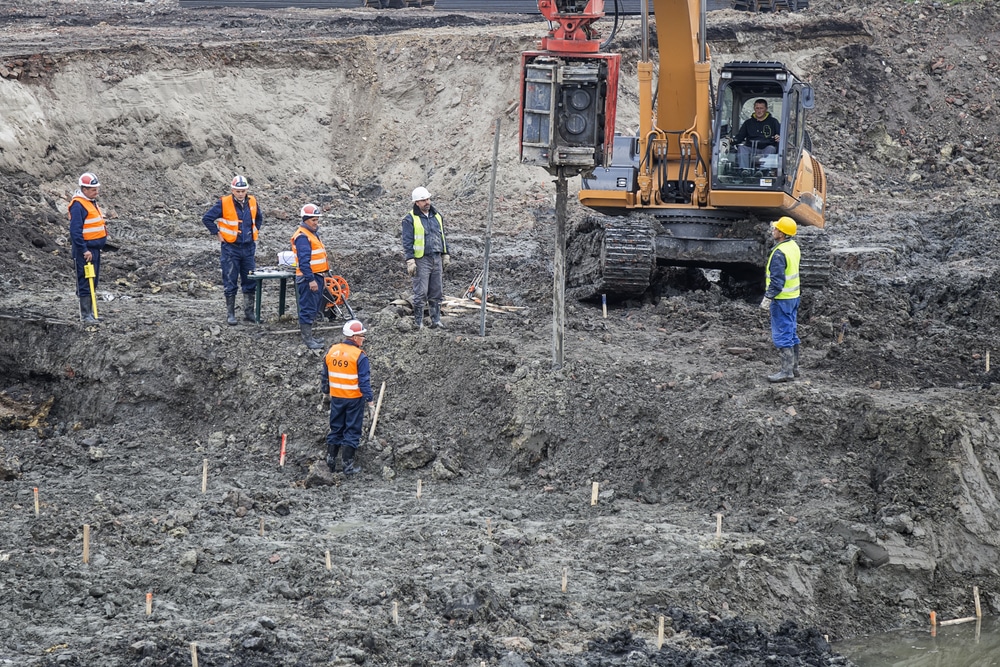Just How Consulting Engineers Enhance Geotechnical Engineering Projects: Insights Into Their Knowledge, Approaches, and Collaborative Approaches
Consulting engineers are pivotal in improving geotechnical engineering jobs, applying their specialized knowledge to browse the intricacies of subsurface conditions. Their methodologies incorporate a variety of site examination methods, including Criterion Penetration Examinations (SPT) and Cone Infiltration Tests (CPT), which inform essential choices during the layout and building and construction phases. Their joint methods foster interaction among varied project stakeholders, inevitably shaping the task's trajectory. As we take a look at the multifaceted duties these experts play, it becomes clear that their payments extend beyond technical know-how, prompting a more detailed take a look at the implications for job success.
Role of Consulting Engineers
The proficiency of speaking with designers in geotechnical engineering is fundamental to the successful implementation of building tasks. These specialists play a critical role in assessing dirt and rock properties, which are essential aspects influencing design and building choices. By performing extensive website examinations, consulting engineers accumulate crucial information that informs the design process, ensuring projects are improved steady and appropriate ground.
Consulting designers likewise offer vital understandings right into danger administration (geotechnical geologist). They identify prospective geotechnical dangers, such as landslides, dirt liquefaction, and settlement issues, enabling stakeholders to implement reliable reduction methods. Their experience help in maximizing structure styles, which can result in significant cost financial savings and boosted safety and security
Moreover, seeking advice from engineers work as a vital web link between project proprietors, engineers, and contractors. Their capacity to convert complicated geotechnical data right into actionable suggestions fosters cooperation and helps with informed decision-making throughout the task lifecycle. This multidisciplinary technique not only boosts task effectiveness but also makes certain compliance with regulative standards and ideal methods.
Trick Methods in Geotechnical Engineering

One primary technique is site examination, which involves performing area tests and research laboratory analyses to collect information on subsurface conditions. Methods such as Criterion Penetration Screening (SPT) and Cone Penetration Screening (CPT) are commonly made use of to assess dirt stratigraphy and stamina. Furthermore, geophysical methods, consisting of seismic and electrical resistivity surveys, supply non-invasive means to examine subsurface attributes.
Another vital technique is numerical modeling, which allows designers to simulate numerous scenarios and predict how soil-structure interactions will act under various loading problems. Limited Aspect Analysis (FEA) is a common approach used in this context.
In addition, the layout of structures, maintaining structures, and earthworks relies heavily on these methodologies - geotechnical geologist. By incorporating sophisticated analytical tools with field information, consulting designers can establish tailored solutions that address details task obstacles, inevitably adding to the security and security of building jobs
Significance of Soil Evaluation
Dirt analysis works as a foundational element in geotechnical design, giving crucial understandings into the physical and chemical residential properties of soil essential for reliable building planning. Understanding dirt qualities is crucial for establishing its load-bearing ability, drain behavior, and possibility for settlement view or instability. Detailed dirt investigations, consisting of sampling and laboratory screening, help recognize parameters such as dirt type, dampness content, thickness, and shear strength.
These evaluations educate the selection of proper building and construction techniques and materials, inevitably affecting project security and durability. For circumstances, natural soils might call for different structure layouts compared to granular soils, demanding customized design solutions. Soil evaluation help in recognizing contaminants that could pose risks to human health or the environment, allowing for the development of mitigation strategies.
Incorporating dirt evaluation right into the beginning of task growth assists to lessen unanticipated obstacles, making sure that engineers can expect and address potential concerns before they escalate. By establishing a comprehensive understanding of the website problems, seeking advice from click for more engineers can optimize layout effectiveness and decrease costs, therefore boosting the general success of geotechnical engineering tasks.
Joint Methods in Projects
Effective geotechnical jobs typically hinge on collaborative techniques that combine diverse know-how from different disciplines. Reliable partnership among consulting designers, rock hounds, environmental researchers, and building professionals is critical for attending to complicated challenges and maximizing project end results. By leveraging the special skills and knowledge of each employee, projects can benefit from an alternative understanding of the website conditions, regulatory needs, and engineering restraints.
Regular communication and interdisciplinary conferences help with the sharing of understandings and foster a culture of synergy. These joint initiatives allow the identification of prospective risks early in the job lifecycle, enabling timely mitigation techniques. Moreover, integrating responses from stakeholders, including neighborhood areas and regulative companies, makes certain that all point of views are taken into consideration, enhancing project acceptance and conformity.
Furthermore, the combination of sophisticated modern technologies, such as Geographic Details Equipment (GIS) and Structure Details Modeling (BIM), further enhances collaboration. These tools enable the real-time sharing of data and visualization of geotechnical conditions, advertising educated decision-making. Inevitably, a joint strategy not just simplifies task implementation but additionally lays the structure for cutting-edge solutions to complicated geotechnical engineering difficulties.
Influence On Task Outcomes

Consulting engineers use sophisticated methodologies such as threat evaluation and anticipating modeling, which improve the accuracy of task forecasts. Their capacity to integrate cutting-edge innovations, like geotechnical instrumentation and information analytics, additionally refines the style and building procedures. Because of this, tasks experience boosted performance, reduced expenses, and decreased delays.
Additionally, fostering efficient interaction and cooperation among employee boosts problem-solving abilities. When obstacles arise, an unified front permits quick identification of options, preventing potential problems. Eventually, the collective initiatives of browse around these guys consulting engineers add to better results, making sure that tasks fulfill both governing criteria and customer assumptions.
Conclusion
